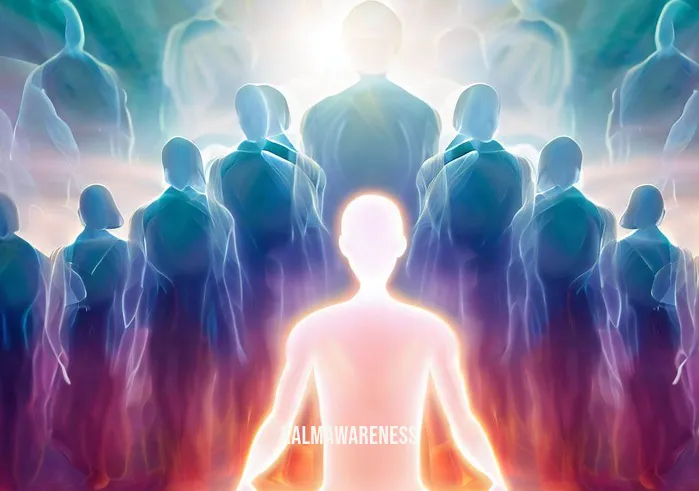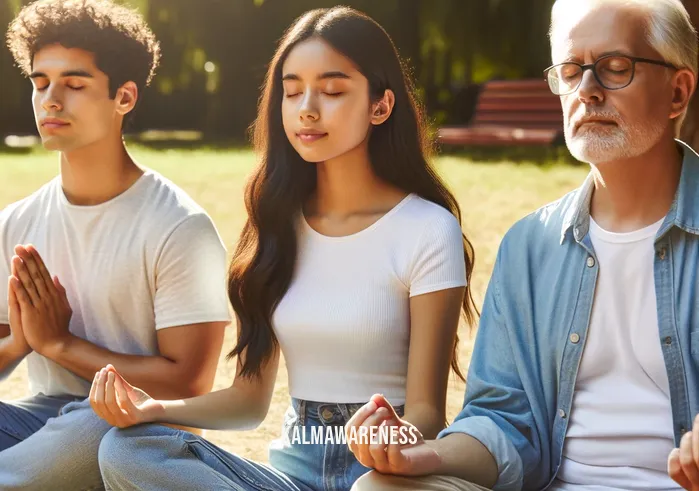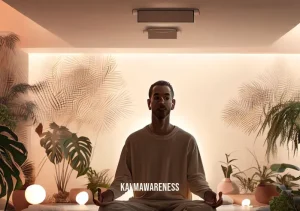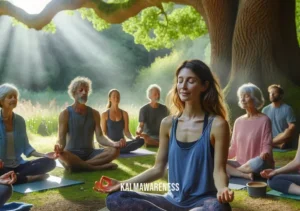Is Meditation a Ritual? An In-Depth Exploration
Meditation, an age-old practice, has woven its way through various cultures and traditions around the world. Some view it simply as a relaxation technique, while others consider it a deeply spiritual endeavor. One question that often arises, especially among those new to meditation is: is meditation a ritual? This article will delve deep into this question, exploring various perspectives, techniques, and practices from around the world.
Understanding the Essence of Meditation
Meditation, at its core, is a tool for mindfulness. It teaches us to become present in the moment, allowing us to step away from the hustle and bustle of our daily lives. As Thich Nhat Hanh reminds us, “life is available only in the present moment.” Meditation helps anchor us in this present moment, bringing clarity and calm.
“Meditation is not about turning off the mind, but understanding it.”
However, the methods and intentions behind meditation can vary widely. Some might use ancient African meditation techniques, which carry rich traditions and histories. Others might engage in meditation in motion, finding stillness in movement.
Meditation as a Ritual
Meditation can certainly be ritualistic for many. Rituals are repetitive actions often performed with a specific intention or purpose. They help create a sense of purpose and grounding. So, when one dedicates a particular time, place, and method for their meditation, it becomes a ritual.
Dedicated Time: Just as one might attend a Penn mindfulness class at a specific time, setting aside a dedicated time for personal meditation can solidify the practice in one’s routine.
Specific Location: Whether it’s a corner of a room or a quiet spot in nature (perhaps during mindful hiking), the environment can play a crucial role in enhancing the meditation experience.
Chosen Technique: Whether it’s through micromeditating, being guided by a meditation consultant, or practicing mindful martial arts, the technique chosen can become a significant part of the ritual.
The Evolution of Meditation
As with all practices, meditation too has evolved. Modern approaches sometimes intertwine with traditional methods, creating hybrids like mindful muscle training. This fusion brings a fresh perspective to meditation while keeping the essence intact.
But whether it’s ancient techniques or modern practices like meditation for menopause, the foundational principles of mindfulness, presence, and awareness remain unchanged.
Incorporating Meditation into Daily Life
One doesn’t need to be seated in a lotus position to meditate. Practices like gratitude yoga in Princeton or even reading mindfulness books for teens can serve as meditation in their own right. The key is intentionality.
- Being present during a task, even if it’s as mundane as washing dishes.
- Taking short breaks during work to breathe deeply and center oneself.
- Engaging in activities that require full attention, promoting a state of ‘flow’.
“Meditation isn’t about adding something to our routine, but discovering what’s already within.”
Conclusion: Is Meditation a Ritual?
The answer to whether meditation is a ritual isn’t straightforward. It varies from person to person, culture to culture. But for many, it serves as a sacred ritual, grounding them in the present, connecting them with their inner selves, and providing a path towards self-improvement and mental health.
For more insights into meditation and mindfulness, explore topics like mindful skills or delve into the spiritual aspects with mindful miracles.
We invite you to continue to the next part of this article where we will explore the various techniques of meditation, its benefits, and its influence on mental health and wellbeing.

The Multifaceted World of Meditation Rituals
Diving deeper into the realms of meditation, we come across various facets and layers that enhance our understanding of this age-old practice. Often, the question arises: is meditation a ritual? This chapter unfolds further perspectives, traditions, and practices that offer unique answers to this query.
Meditation Across Cultures
Meditation is not a monolithic entity; it varies across cultures and regions. Let’s delve into how different cultures perceive meditation as a ritual.
Asia: Home to some of the oldest meditation traditions, including Zen and Vipassana. Practices here often merge with religious rituals. Mindful en Espanol, for instance, offers insights into how mindfulness has transcended borders, finding its way from Eastern traditions to Spanish-speaking communities.
Africa: With a deep-rooted connection to nature, ancient African meditation techniques emphasize rhythmic movements and chants as rituals to connect with the divine.
Europe: While meditation in Europe has been largely influenced by Eastern practices, there’s a growing interest in rediscovering ancient European shamanic and druidic meditation techniques.
Americas: Here, indigenous practices often use meditation as a means to connect with nature spirits. The more contemporary scene integrates practices from around the world, offering sessions like meditation pleine conscience, a French approach to mindful meditation.
Australia: Indigenous Australians use ‘Dreamtime’ stories as a form of meditation to connect with their ancient past and the land.
Did you know? Meditation rituals are not always solitary; group meditations, like those offered in the mindful miracle sessions, provide a collective energy that many find amplifies their experience.
Diverse Techniques, Common Purpose
While the techniques and rituals vary, the purpose remains grounded in self-awareness, mental well-being, and spiritual growth. Here’s a table highlighting various meditation techniques, their origins, and primary benefits.
| Technique | Origin | Primary Benefits |
|---|---|---|
| Zen Meditation | Japan | Enhances focus, clarity, and detachment |
| Guided Visualization | Global | Reduces stress, improves mood |
| Mindful Muscle Training | Modern | Boosts body-mind connection, physical health |
| Chakra Meditation | India | Balances energy centers, promotes holistic health |
| Loving-kindness Meditation | Buddhist | Cultivates love, compassion, and positive interpersonal connections |
The Science Behind the Ritual
It’s fascinating to note that modern science backs the benefits of these ancient practices. Meditation, whether perceived as a ritual or not, undoubtedly impacts the brain’s structure and functionality.
For instance, consistent meditation:
- Reduces the gray matter density in areas related to stress.
- Enhances concentration by increasing cortical thickness.
- Boosts empathy by altering the structure of the brain’s anterior insula.
This blend of tradition and science underscores the point that while the rituals and practices may vary, the intent of fostering well-being remains consistent.
Transforming Habitual Thinking
One significant benefit of meditation is its ability to break the chains of habitual thinking. Humans are creatures of habit, and our thought patterns are no different. By establishing a meditation routine or ritual, one can effectively rewrite these ingrained patterns, fostering a healthier, more positive mindset.
Conclusion: The Rich Tapestry of Meditation Rituals
Is meditation a ritual? It’s evident that meditation is as diverse as the cultures and traditions that practice it. Whether through songs, dances, chants, or silent introspection, these rituals converge on a universal truth: the pursuit of inner peace, self-awareness, and a deeper connection to the universe.
Continue to the next chapter where we’ll explore personal stories of transformation through meditation, shedding light on its profound impact on various aspects of human life.
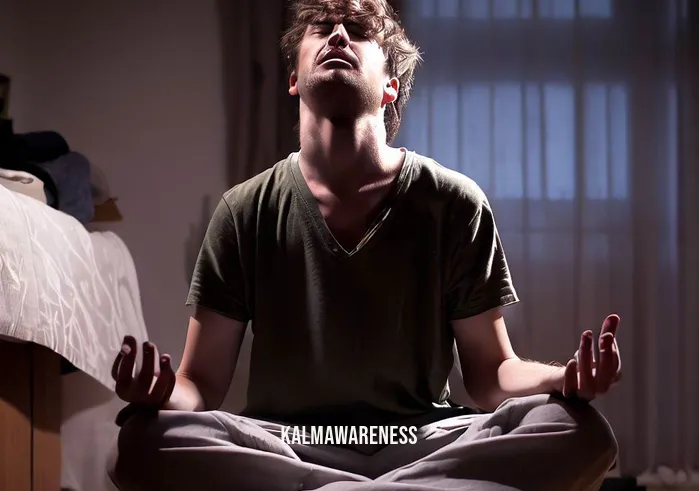
Personal Journeys: How Meditation Rituals Inspire Hope and Transformation
The transformative power of meditation has been testified by countless individuals across the globe. But is meditation a ritual? Beyond the practices and the techniques, it’s the personal stories and experiences that truly resonate with the essence of this inquiry. Through their journeys, we find hope, inspiration, and a deeper understanding of the human psyche.
A Glimpse into Personal Narratives
Dive into these tales to understand how meditation, when embraced as a ritual or a simple practice, can be a beacon of hope in turbulent times:
Finding Strength Amidst Chaos
Sarah, a participant of the mindful miracle sessions, recalls a phase when despair seemed unending. Consumed by work stress and personal loss, she found solace in meditation. For her, meditation wasn’t just a ritual but a lifeline.
“In the midst of movement and chaos, keep stillness inside of you.” – Deepak Chopra
Mindful Moments in Motherhood
Anita, who found guidance through meditation stories for students, shares her transformative journey from being a stressed student to a mindful mother. Embracing meditation as a daily ritual, she navigated the challenges of motherhood with grace and patience.
“Every moment is a fresh beginning.” – T.S. Eliot
From Pain to Peace
Having suffered a debilitating accident, John turned to mindful muscle training. The journey wasn’t easy, but with consistent meditation, he not only regained physical strength but also found mental resilience. John’s story is a testament that rituals can sometimes lead to rebirth.
“Out of difficulties grow miracles.” – Jean de La Bruyère
The Science of Hope in Meditation
Scientific studies have showcased that meditation can significantly impact areas of the brain related to optimism and resilience. Those who adopt meditation as a ritual often report heightened feelings of hope and a deeper sense of connection.
The amygdala, responsible for our fight or flight response, becomes less reactive. Thus, allowing us to handle stress more efficiently. On the other hand, the prefrontal cortex, associated with higher-order brain functions, becomes more active. This shift can enhance positivity, problem-solving abilities, and overall hopefulness.
Interestingly, courses like the a renewed mind employee portal have started integrating meditation into their curricula to promote hope and resilience among workers.
“Hope is being able to see that there is light despite all of the darkness.” – Desmond Tutu
Meditation: A Universal Language of Hope
It’s evident that regardless of background, age, or circumstance, meditation speaks a universal language of hope. Whether it’s practiced as a ritual in sacred spaces or in the quiet corners of one’s home, the essence remains the same: to find light amidst the shadows.
One might wonder, as they delve into practices highlighted in mindfulness books for teens, or as they practice meditation in motion, if a structured ritual is crucial. The answer, perhaps, lies not in the ritualistic approach but in the intent and the outcome.
“The best way to capture moments is to pay attention. This is how we cultivate mindfulness.” – Jon Kabat-Zinn
Conclusion: Embracing the Ritual of Hope
To answer the question, “Is meditation a ritual?” – it’s both a personal and universal journey. It’s an anchor during stormy times, a source of inspiration, and, most importantly, a beacon of hope. The myriad stories of transformation, backed by scientific insights, reinforce the belief in meditation’s unparalleled power.
“You may not control all the events that happen to you, but you can decide not to be reduced by them.” – Maya Angelou
Join us in the next chapter as we delve deeper into the societal impact of meditation. Discover how communities and organizations are harnessing the power of mindfulness to create harmonious environments and promote well-being.
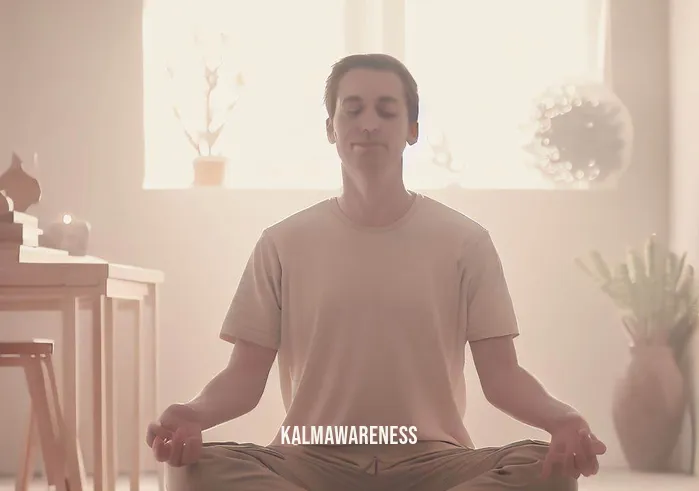
Meditation’s Global Footprint: Rituals Around the World
As we ponder on the question, is meditation a ritual, we embark on a fascinating journey across the globe. Diverse cultures and traditions provide a rich tapestry of meditative practices, some deeply rooted in ritualistic observances, while others remain simple yet profoundly impactful. Let’s traverse continents and explore how different societies incorporate meditation into their daily lives.
1. Asia: The Cradle of Meditation
Buddhist Meditations: Predominantly found in countries like Nepal, Thailand, and Myanmar, Buddhist meditation practices such as Vipassana focus on insight and mindfulness. Rituals like seeking alms and chanting are intrinsic to these practices.
For those seeking to understand the origins of mindfulness in depth, the penn mindfulness class offers an expansive view on this ancient practice.
Zen Practices: Originating from Japan, Zen or Zazen meditation emphasizes ‘just sitting’. The simplicity of this practice often belies the profound understanding it offers.
Taoist Meditation: Rooted in China, this form integrates visualization, mantra, and breath control. It lays importance on living in harmony with the Tao, which is regarded as the fundamental principle that is the source of all existence.
2. Africa: Melding Nature with Meditation
Indigenous Techniques: African meditation techniques, like the ancient African meditation techniques, often interweave nature. They incorporate rhythmic dances and trance states to connect deeply with the earth and the ancestors.
Sufi Dhikr: Found in Northern African nations, this form of meditation involves reciting Allah’s names to attain a state of ecstatic abandonment.
3. The Americas: A Fusion of Old and New
Mindfulness in Motion: In the bustling urban centers of the US, practices like mindful martial arts are gaining popularity. These meld ancient wisdom with modern needs, offering both physical agility and mental peace.
Native American Spirituality: Grounded in nature, ceremonies like the Vision Quest are meditative rituals aiming at self-discovery and communion with the Great Spirit.
4. Europe: Contemporary Approaches to Ancient Wisdom
Modern Retreats: Europe, especially France, witnesses a surge in meditation pleine conscience retreats, which emphasize being present in the moment.
Walking Meditations: With the breathtaking landscapes, practices like mindful hiking in places such as the Alps provide a refreshing approach to meditation. The journey here is both outward and inward.
5. Australia & Oceania: Embracing Diverse Practices
Aboriginal Dreamtime: The indigenous people of Australia have a profound spiritual practice that revolves around the Dreamtime stories. These narratives, while not meditative in the conventional sense, promote a deep spiritual connection and understanding of self.
Incorporating Global Techniques: Given its multicultural populace, Australia witnesses a melting pot of meditation practices, from Buddhist to Taoist, to modern mindfulness techniques.
Wrapping Up: The Universality of Meditation
To discern, “Is meditation a ritual?” is to embark on a rich, enlightening global expedition. The ways might differ, from the chanting monks of Asia to the dancing tribes of Africa, or the hikers finding solace in Europe’s scenic beauty. Yet, the essence remains the same – seeking a deeper understanding of oneself and the universe.
It’s evident that across latitudes and longitudes, meditation has been embraced as both a ritualistic observance and a simple, accessible practice. Whether you’re practicing micromeditating in short bursts throughout your day or committing to a structured session of meditation for menopause, the underlying aim is mindfulness, self-awareness, and tranquillity.
Continue with us on this enlightening journey. In the upcoming chapter, we’ll delve into the physiological benefits of meditation. Discover how these ancient practices offer holistic wellness, impacting both mind and body.
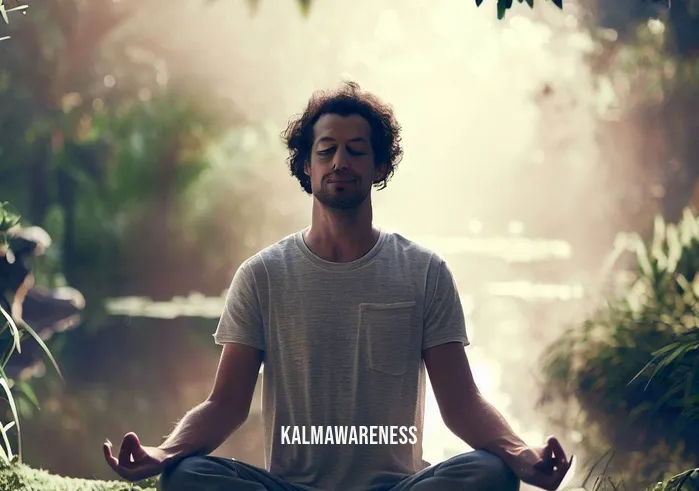
Meditation’s Ripple Effect: Beyond the Ritual
In our exploration of the query, is meditation a ritual, we’ve spanned continents and dipped into various cultures. While the practices differ, a common thread emerges – the desire for inner peace and connection. But what happens after the meditative session concludes? How does the tranquility achieved during meditation influence our daily life, and why should one continue to practice and delve deeper?
The Afterglow of Meditation
1. Enhanced Clarity and Focus
The moments post-meditation often feel like the world has come into sharper focus. The mindful muscle that’s nurtured during sessions aids in clearer decision-making and increased attention span in daily activities. This clarity can be invaluable, especially in our modern world saturated with distractions.
2. Better Emotional Regulation
An emotional wave, whether it’s joy, sorrow, or anger, can often overpower us. Meditation helps temper these extremes, allowing for a more balanced emotional response. By examining our reactions in a mindful miracle of sorts, we can choose how we respond rather than impulsively reacting.
3. Strengthened Relationships
Being present, truly present, is perhaps the best gift one can offer to another. Meditation hones this skill of being in the present moment. The ripple effect? Stronger, more genuine connections with family, friends, and even strangers.
The Ongoing Journey
While meditation might sometimes feel ritualistic, its impact is profound and far-reaching. For many, it evolves from a mere ritual to a way of life. The journey doesn’t stop at the mat or cushion; it only begins there.
1. Lifelong Learning
Meditation is akin to an art, and like all arts, it requires practice. Over time, as we deepen our practice, we unearth new layers within ourselves. It’s a renewed mind employee portal that keeps offering fresh perspectives, insights, and wisdom.
2. Expanding Horizons
The more we meditate, the more curious we become. This could lead to exploring other spiritual practices, reading mindfulness books for teens or even adults, or participating in community-driven events like gratitude yoga in Princeton. The journey, while personal, often leads to expansive horizons.
3. Making it Your Own
Whether you find solace in meditation stories for students, or seek guidance from a meditation consultant, or even find mindfulness in a different language, such as mindful en español, the beauty of meditation lies in its adaptability. It molds to fit your needs, becoming a deeply personal and transformative experience.
Invitation for Continual Exploration
While our journey exploring if meditation is a ritual comes to an end, your personal exploration needn’t halt. The world of meditation is vast, intricate, and profoundly enriching. Dive deeper, read more, and most importantly, practice. Allow the serenity, clarity, and insights to permeate your daily life, turning meditation from a mere ritual into a transformative lifestyle.
Thank you for accompanying us on this enlightening expedition. While this chapter concludes our discussion on meditation as a ritual, the myriad facets of mindfulness await your exploration. For more insightful reads, our extensive mindful skills collection and other magazines beckon. Here’s to a journey of inner peace, self-discovery, and boundless growth!
